|
 |
|
Precis Intermedia has a new Facebook Community Group, for discussions, feedback, and questions. This will complement Precis Intermedia's existing MeWe group as a primary social media hub.


Facebook: https://www.facebook.com/groups/precisintermedia/


MeWe: https://mewe.com/join/precis_intermedia | | 0 Comments | Add Comment | Permanent Link | | Read more... | |
I have been working on a pretty advanced system to automate most of the process of remastering old books. This combines tools to utilize an optimized optical character recognition output, use precise locations of the original text, and then create a brand new text-based layout that is virtually identical to the original, only with crisp fonts in a searchable and copyable PDF file (and touched-up original images). It is not perfect, and still requires some fine-tuning, but nothing compared to the normal process of touching up every page by hand in photoshop.

Here's a sample. The top part shows an image that was touched-up in photoshop for the Classic Reprint of Machineguns & Magic. The bottom part uses the new automated system to produce a text version using truetype fonts. It maintains the layout and spacing, but will print more closely to modern page layout, such as something designed in Adobe Indesign.

The font weight is noticeably different, but this is due to several factors. The original book was produced with an offset printer, so the ink bleeds in the paper a bit more. It is also scanned to an image, which is then manipulated for a clean black and white print. This means that current Classic Reprints do print slightly heavier than the originals. The new system produces an all-new printing with modern technology.

I'm running the system through some final testing and hope to begin using it to produce the Classic Reprint for The Egyptian Trilogy, a supplement for Man, Myth & Magic.


 | | 0 Comments | Add Comment | Permanent Link | | Read more... | |
This is part 13 in a series discussing forgotten RPGs (also see Part 1, Part 2, Part 3, Part 4, Part 5, Part 6, Part 7, Part 8, Part 9, Part 10, Part 11, and Part 12). That is, games most people have never heard of or that didn't last long on store shelves for one reason or another. This entry consists of mostly fantasy titles.


1. The MEGA Role-Playing System (by Isy Allon and Ben Brakas; published by MEGA Games Ltd in 1987)

This hardcover is printed on glossy paper, with an extremely legible but bland layout. The introduction devotes two paragraphs to explaining the manufacturer's publication codes. I think they only released this book and an adventure, so yeah. Anyway, we're hit with the basics of dice, measurement, open ended rolls, play aids... and also "s"-dice. This dice notation represents an extra die rolled with the base die. According to the example, s24 means to roll 2d10 + 1d4, and s47 indicates rolling 4d10 + 1d7. It's a little confusing. There is a gamemaster's code with 15 bullet points, as well as a player's code with 5, all fitting for a fair and potentially exciting game. Unlike most games, the Attributes (Strength, Health, Endurance, Coordination, Manual Dexterity, Handedness, Learning, Willpower, Awareness, Artistic Creativity, and Musicality) have potential ratings, which indicate the maximum value the character can have in an Attribute. The current rating depends on the character's level of development. The potential can be determined randomly or via point allocation. Sample random potentials are given, but this gets a little complicated, because you need to figure out how many dice to roll for a given value according to the aforementioned dice conventions. I don't like it. Before I go on, I want to point out that there are large tables for determining point allocation and current values. There are also calculated values, including size and weight. Regular training is required to maintain attributes and skills. The base mechanic is attribute + 2d10, where rolling over a difficulty number is successful. Skills also have potential values, but this is based on their related attributes. Skill rolls are essentially attribute rolls plus a skill bonus and either 1d20, 2d10, or 3d6 (depending on the coverage/length of the action). A number of backgrounds are provided with potential attribute and skill values. Damage is covered next, using a chart to compare the damage value vs. the target's size. The final value translates to a dice roll (which you need to figure out how to handle). Armor reduces the damage value before determining the dice roll. Basic attacks are rolled with a d20 plus attacker's value beating the defender's value. There's a number of adjustments and special rules. Again, there are lots of tables, but they are very legible and organized well. Other sections, like movement, poisons, magic, and creatures are also mostly organized well. One really nice touch for each creature is the highlighting of their habitats on a line-drawn map of the earth. Is this game for me? Not really. It doesn't seem particularly complicated other than the potentials, but nothing really resonates with me. Having to use your own judgement in determining which combinations of dice to roll is rather offputting. I never heard of this game back in the day; given that it is from the UK, it's possible it didn't make much of a splash in the US.





2. Knights of the Round Table (by Phil Edgren; published by Little Solder Games in 1976)

We start with a short preface on the world of the Round Table and then a brief introduction. Most significantly discussed is that the game requires 25mm miniatures, or any other scale as long as you make adjustments. Sheets of cards are also included (two identical sets, one for each player), but you will need percentage dice. Also of note is that the game's scope can either be a single combat, tournament, or campaign. The first chapter begins with combat. Eight of the cards represent attacks, showing the percentage needed based on the opponent's chosen card. The better the result, the more potential effects are inflicted, such as stun, wound, unconscious, dead, and fall. Pretty easy. Apparently, each character has a prowess rating. The difference between the two character's prowess can be spent to increase die rolls or strike first (for the higher one). Prowess is utilized for other rules too, such as using only one hand for a two-handed weapon. Wounds decrease prowess. Other bonuses and penalties can also be applied. Other rules include grappling, jousting, feuds, and a number of options. Chapter 2 discusses "The Tournament," which is essentially combat involving more than two charactes. There are optional rules for that too. Chapter 3 is about Chivalry, which is all of three pages. Then we hit Chapter 4 for limited campaigns. This consists of creating characters (they basically only have a prowess rating), travel, encounters, healing, love, remorse, and GM ideas. Chapter 5 brings us to the full campaign, which discusses broader topics like warfare, domains, magical power, and miscellaneous notes. That's about it. It actually looks like a fun little game, albeit extremely limited. House rules would probably be needed for a better experience.

Shill alert: The long-lost Sir Pellinore's Game is back with a series of reprints. It is of the same era (for both release date and subject matter), but covers more bases for the rules in as simple a way as possible.





3. Perilous Journeys (by Jamie Hardy; self-published in 2010)

A bit more modern this time, our first encounter is a list of terminology over one and quarter pages. Then we hit character creation, so I would say that this is not for people new to roleplaying, but I suspect the system is quite easy to learn. An overview of the character creation process is followed by specifics for each race, discussing the allocation of points to core attributes, selecting edges and flaws, etc. The core attributes are Health, Agility, Mind, and Speed. These are percentage-based, with each race having minimums and maximums for a given attribute. Races include Humans, Dryads (tree nymphs), Dwarves, Elves, Fomorians (semi-giants), Gnomes, Lurikeen (fairies/leprechauns), and Wild Elves. Racial traits are also applied, which act like special abilities. You then choose 5 abilities, with one being weapons. The text seems to treat abilities and skills as the same thing. It's a little confusing. Edges and flaws can also be chosen. There's also a mana pool for some things, I suppose for spells mainly. Strength is designated as an optional attribute, and Endurance and special moves are applicable if advanced combat is used. You can also choose a profession via guilds, which further enhances the character, but I'm getting really confused at this point. I think this whole process could have been handled a lot simpler, perhaps with better organization. The next section talks about spells. There are different types of magic, each with different spells: Dimensionology, Elementalism, Enchantment, Necromancy, Shamanism, Sorcery, and Theurgy. Page 89 begins discussion of the game system, which primarily consists of percentage rolls. Roll equal to or under your attribute or ability to succeed. Percentage modifiers can also be applied to a roll. Fate points can optionally be used to modify rolls. Combat works similarly, with damage being equal to weapon damage less armor factor. Armor can be degraded and repaired, which is a nice touch. The advanced combat rules add more special abilities that can be learned, such as block, cleave, and magic fist. Towards the end, we hit topics on creating and modifying professions, magic items, monsters list, weapons tables, and finally some character sheets. All in all, this seems like a serviceable game. I'm not sure if it introduces anything new, but you can decide that for yourself, since it is available as a free download.





4. Real Wonders & Tremendous Gambits (Book 1) (by Roby Ward and Timothy Guiosky; self-published in 1987)

This one comes in a spiral binder. A bit unusual, but you can lay it flat or even stand it up, which is convenient. Is the rest so accommodating? Let us see. This is apparently Book 1 of 5, as well as the second printing. I have no idea if the other books were ever published. This one covers the rules, whereas the others in the series were for Medieval Society, Developed Society, Metaphysics, and Beings & Beasts. We are met with the typical introduction, although it should be noted that the game is not of pagan or satanic origins, as both creators are fine Christians, or so they claim :). They do not use the deities of any real-world mythos as to not offend anyone. That's part of the disclaimer. Characters use 7 attributes with values equal to 2d20 and a minimum of 6: Muscle, Constitution, Endurance, Involvement, Coordination, Charisma, and Willpower. Secondary attributes include Consciousness, Dexterity, Fatigue, Hit Points, Intelligence, and Social Standing. Not sure how I feel about Intelligence being a secondary attribute, and Involvement is essentially reflexes and reaction, but Dexterity is secondary. Seems a bit odd, but not a deal-breaker. Next, we are presented by some random tables for racial type, hair and eye color, general height, and homelife. Skills are next, with a discussion of using points to purchase them. A nice filled-out character sheet follows as a sample character, but it is still unknown (at least to me) as to how to calculate the related skill values (SMP TASKS, DIFF TASKS, etc). Here we go. The next section is all about the action. The use of specific attributes in mechanical terms are presented here. For example, Muscle is used to lift objects. If you try to lift more than the standard weight for a given rating, you must make a roll against the Muscle score. However, I have no idea how to roll at this point in the book, unless I missed it. Moving on, we learn that tasks have different difficulties, based on the level. If I understand this correctly, mulitply the skill level by the difficulty's factor for a base percentage. Then a bonus is applied if the skill level is at least equal to the difficulty range, doubled if greater than the difficulty range. Not too complicated, but I did have to read it a few times. One thing I noticed is that there is a lot of discussion in this book, but not enough focus on the basic mechanics, rather their abstract functions. After this, we get skill descriptions, which is followed by "The Rules," which seems an odd choice. Perhaps, this should have been titled "Combat." Rounds consist of impulses, during which the character can act, similar to how Champions did it. This goes on for about 5 pages. Using different types of weapons is discussed. There is a formula to determine the minimum Coordination needed for weapons, as well as a formula for damage. Maximum range uses simple formulas. There's lots of rules here, like rolling multiples of 10 causes a critical hit or fumble. Aimed attacks, parrying, sweeping, and other possibilities during combat are covered. Character Advancement utilizes XP and levels to allow for the increase in attributes and skills. Finally, there's some GM notes, example of play, and bunch of tables in the back. I think this game could have benefited from a short primer. The rules do not seem complicated, but the writing hampers my comprehension. Just an explanation of the mechanics in a sidebar or single page for reference would have greatly helped in my opinion. This would have been a pass back in the day.





5. High Fantasy (by Jeffrey C. Dillow; published by Fantasy Productions, Inc. in 1978)

1978 seemed to be a popular year for new RPGs, as it also saw What Price Glory and Sir Pellinore's Book, among others. The layout is basic, but that means that everything is easy to read. The first thing we need to know is that the game uses percentile dice. Creating characters starts at page 5, with 11 steps summarized. There are four main classes: warriors, wizards, animal masters, and alchemists (each listing which steps are relevant; a nice touch). The first problem facing those new to this game is that the offensive and defensive probabilities for the character are nowhere to be found. We are told to see Table 1. After flipping through the whole book, Table 1 is on page 32, but we can now look up these values for level 1 characters. The next step is to roll for innate abilities, adding a modifier from that table. A roll is made on tables to determine how many spells wizards get, as well as strength, coordination, and quickness values. Finally, we determine the number of starting tams (currency), purchase equipment, and determine encumbrance. After all this is done, a player may also choose a subclass for his character, with specialized abilities. On to combat, which is composed of two segments. One segment is for movement, missiles, and magic, while the other is for melee. Characters act in order of highest quickness, with attack rolls being pretty simple in the form of attacker's offensive probability reduced by the defender's defensive probability. If successful, the combat table is consulted. The column is shifted left or right, depending on the weapon modifier, and another roll is made, comparing it to the original probability. Damage gets a little confusing. There are three numbers involved here. The one one the left is subtracted from the defender's offensive value. The top-right number is subtracted from the defender's defensive value, and the bottom-right number is subtracted as armor damage. Critical hits and stun may also be applied. Magic requires mana to be spent, with spells being more potent as characters increase in level. Creatures and some notes round out the rest of this 48-page book. It's a fairly simple system with good coverage of basic fantasy elements, with a bit extra thanks to the subclasses. I like it. Note that there was also a second edition by a different publisher with a more professional layout and adventure books.





6. Mage (by Wilf K. Backhaus; published by Archaeron Games Ltd in 1980)

We jump right into character generation. The first step is social class, with different odds of achieving Noble, Middle, or Rabble as random choices from each of 5 races (human, elf, dwarf, halfling, and goblin). Next up is body type of which there are three (Ecto, Meso, and Endo) with different random odds for the various national groups. Size is similar with different odds for Small, Average, and Tall, depending on body type and whether male or female. Primary characteristics are classified as either physical (Strength, Agility, Dexterity, and Stamina) or psychological (Mental Approach, Deadliness, Social Attitude, Piety, Sensitivity, and Greed), and rated from 2 to 10. That's an interesting mix. The ratings are determined by rolling a d6 and adding a modifier based on size and body type. Basic rolling for stuff not covered in the game, like raw characteristic use, is with 1d10, with success achieved by getting a result equal to or less than the rating. We move onto Attributes, which are calculated values, including Endurance, Coordination, Shock Resistance, Behavior Pattern, Visionary Capacity, Psychic Capacity, and Demonic Control. A roll is also made for Education level and age. Now comes the meat of the system: Magic. There are various types of magic-users, from psychics to necromancers, with certain requirements and special rules for each. Mages also have a Magic Potential and Magic Level. There are rules for raising level and learning new spells, as well as personal magic devices. Using magic requires a d20 roll under the Basic Magic Attack rating, which is modified by various factors, including strain for a bonus. A save can also be made to resist spells by psychic talents and ordinary magic users. The various spells are explained next, followed by a few pages on characters (these are non-player characters and animals, as player characters are called Personae). Wounds are finally touched on, which lowers the endurance by a certain amount, depending on the severity (light to mortal). The last page lists the credits and some final words. While there is very little outside of rules in this book, I think it accomplishes what the author set out to do. It seems very playable and quick once you have all the attribute calculations done. As part of the Archaeron Games System, this is a companion book to Warrior from the same publisher.





This is not the end. I've got some more entries for another list. And if you want to check out another forgotten game, try Submachine Gun, the WWII RPG from 1981, available once again. | | 0 Comments | Add Comment | Permanent Link | See All Posts Tagged as "ForgottenGames" | | Read more... | |
Precis Intermedia is pleased to announce that it has acquired the intellectual property rights to Machineguns & Magic. This roleplaying game was designed by William L. McCord Jr, who sadly passed away in 2020. His fun writing style and quirky artwork contributes to a unique experience. Machineguns & Magic focuses on a group of soldiers somehow transported from Earth to a fantasy world, who must now deal with hordes of orcs, barbarians, and wizards. This game was also featured in part 5 of my Forgotten RPGs series of blog entries. A classic reprint is currently in the works, which will be available in both PDF and softcover formats.

I had the good fortune to talk to William several years ago. I was enthralled by his ideas and thoroughly enjoyed our conversation. I regret missing out on more fascinating dialog with him. After hearing of his passing and learning more about the man, I decided that I did not want to see Machineguns & Magic continue to fade away into obscurity. With work commencing on the classic reprint, I am honored to keep part of his legacy alive.


 | | 0 Comments | Add Comment | Permanent Link | | Read more... | |


Use coupon code YUJT5NDQQ6 at checkout to receive a 20% discount on all orders (excludes third-party and already-discounted items). Hurry - coupon expires on July 31, 2023.


View Catalog | | 0 Comments | Add Comment | Permanent Link | | Read more... | |
Sir Pellinore's Book is the first edition of the Sir Pellinore's Game series by Michael Brines. This game was originally released in 1978, but is available again in PDF format. It has been lost to time... until now, as Precis Intermedia has acquired the rights. And coming soon is Sir Pellinore's Favorite Game, the third edition in the series from 1981. Still missing is the second edition, but perhaps luck will uncover a copy.


Also of note and coming soon is another RPG by Michael Brines called Submachine Gun, which focuses on commando raids during World War II.


   | | 0 Comments | Add Comment | Permanent Link | | Read more... | |
| The web server has undergone an update, so it is possible that there may be the occasional site issue. Please let us know if you run into any issues either via email, Facebook, or MeWe. Thank you. | | 0 Comments | Add Comment | Permanent Link | | Read more... | |
Precis Intermedia has acquired the rights to the 1978 RPG, What Price Glory. A remastered edition will be available in both PDF and Softcover. The following is an updated advertisement using the one from before its original release.

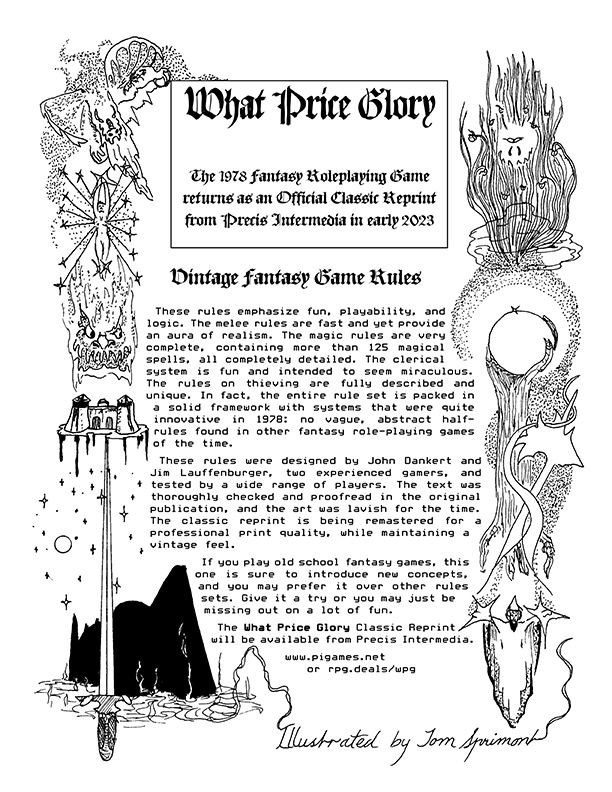 | | 0 Comments | Add Comment | Permanent Link | | Read more... | |
Use coupon code 3NNXCTTGW6 at checkout to receive 20% off your order (excluded discounted and third-party items).

 | | 0 Comments | Add Comment | Permanent Link | | Read more... | |
After completing the most time-consuming part of touching up vintage books, I'm in the final steps of getting the Classic Reprint of Grimsyn Sector done. This Shatterzone supplement provides campaign material for a section of space with new aliens and gear.

Since the hard part of that was done, I began prepping for the next vintage books in the queue, which is The Egyptian Trilogy and The Werewolf of Europe, both for Man, Myth & Magic, although the latter is also compatible with Timeship. The cover work is done (at least the fronts). Here's a comparison between the old and new.

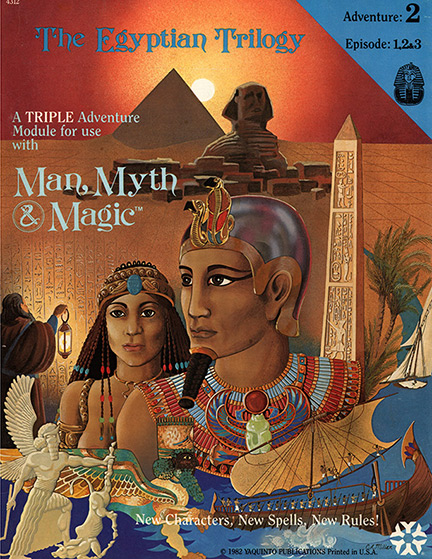 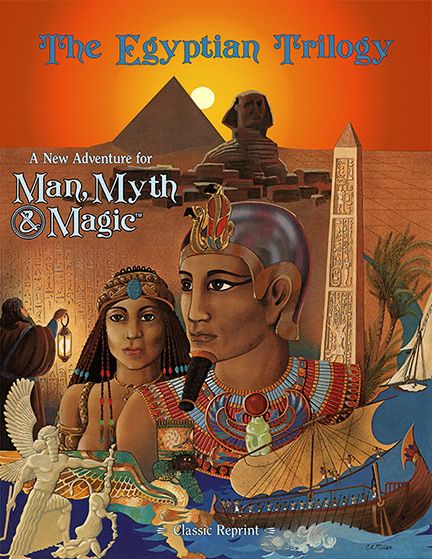


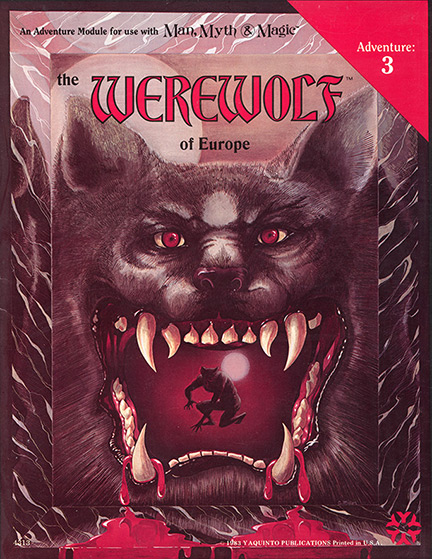 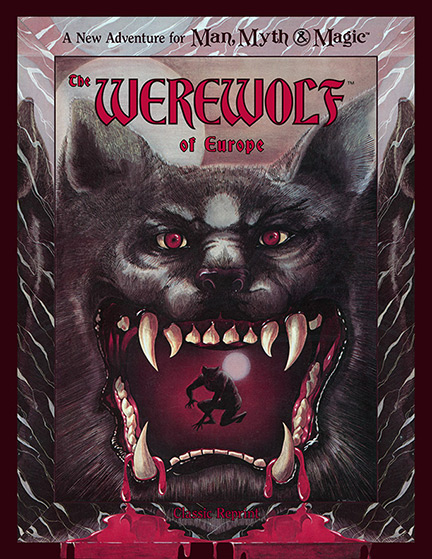 | | 0 Comments | Add Comment | Permanent Link | | Read more... |
|
|
|
|



















